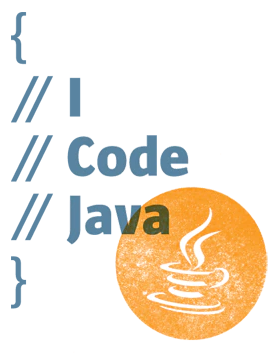提高Redis缓存的命中率是确保系统性能和稳定性的关键。以下是一些提高Redis缓存命中率的策略,以及相应的代码示例:
1. 合理设置缓存过期时间
设置合适的缓存过期时间可以防止缓存数据过时,同时减少缓存击穿的风险。根据数据的更新频率和访问模式,选择合适的过期时间。
示例代码:
1import redis.clients.jedis.Jedis; 2 3public class CacheExpirationExample { 4 private Jedis jedis; 5 6 public CacheExpirationExample(Jedis jedis) { 7 this.jedis = jedis; 8 } 9 10 public void cacheData(String key, String value, int expirationTime) { 11 jedis.setex(key, expirationTime, value); 12 } 13 14 public String getData(String key) { 15 return jedis.get(key); 16 } 17 18 public static void main(String[] args) { 19 Jedis jedis = new Jedis("localhost", 6379); 20 CacheExpirationExample cache = new CacheExpirationExample(jedis); 21 22 String key = "dataKey"; 23 String value = "dataValue"; 24 int expirationTime = 3600; // 缓存 1 小时 25 26 // 缓存数据 27 cache.cacheData(key, value, expirationTime); 28 29 // 获取缓存数据 30 String cachedValue = cache.getData(key); 31 System.out.println("Cached Value: " + cachedValue); 32 33 jedis.close(); 34 } 35} 36
2. 使用合理的数据结构
选择合适的数据结构可以提高数据访问效率。例如,使用哈希结构存储对象属性,可以减少键的数量,提高查询效率。
示例代码:
1import redis.clients.jedis.Jedis; 2 3public class HashDataStructureExample { 4 private Jedis jedis; 5 6 public HashDataStructureExample(Jedis jedis) { 7 this.jedis = jedis; 8 } 9 10 public void cacheHashData(String key, String field, String value) { 11 jedis.hset(key, field, value); 12 } 13 14 public String getHashData(String key, String field) { 15 return jedis.hget(key, field); 16 } 17 18 public static void main(String[] args) { 19 Jedis jedis = new Jedis("localhost", 6379); 20 HashDataStructureExample cache = new HashDataStructureExample(jedis); 21 22 String key = "user:1001"; 23 String field = "name"; 24 String value = "John Doe"; 25 26 // 缓存哈希数据 27 cache.cacheHashData(key, field, value); 28 29 // 获取哈希数据 30 String cachedValue = cache.getHashData(key, field); 31 System.out.println("Cached Value: " + cachedValue); 32 33 jedis.close(); 34 } 35} 36
3. 预热缓存
在系统启动或数据更新时,预先将热点数据加载到缓存中,减少首次请求的缓存未命中率。
示例代码:
1import redis.clients.jedis.Jedis; 2 3public class CachePrewarmExample { 4 private Jedis jedis; 5 6 public CachePrewarmExample(Jedis jedis) { 7 this.jedis = jedis; 8 } 9 10 public void prewarmCache(String key, String value, int expirationTime) { 11 jedis.setex(key, expirationTime, value); 12 } 13 14 public static void main(String[] args) { 15 Jedis jedis = new Jedis("localhost", 6379); 16 CachePrewarmExample cache = new CachePrewarmExample(jedis); 17 18 // 预热缓存 19 cache.prewarmCache("dataKey", "dataValue", 3600); 20 21 jedis.close(); 22 } 23} 24
4. 使用合适的缓存策略
根据应用场景选择合适的缓存策略,如LRU(Least Recently Used)、LFU(Least Frequently Used)等,来淘汰不常用的数据,提高缓存命中率。
示例代码:
1// 在Redis配置文件中设置淘汰策略 2maxmemory 256mb 3maxmemory-policy allkeys-lru 4
5. 减少缓存穿透
缓存穿透指的是查询不存在的数据,每次查询都会打到数据库。可以使用布隆过滤器或将空结果缓存一段时间来应对缓存穿透问题。
示例代码:
1import redis.clients.jedis.Jedis; 2 3public class CachePenetrationExample { 4 private Jedis jedis; 5 6 public CachePenetrationExample(Jedis jedis) { 7 this.jedis = jedis; 8 } 9 10 public String getDataFromCache(String key, DataProvider provider, int cacheTime) { 11 String value = jedis.get(key); 12 if (value != null) { 13 return value; 14 } 15 16 // 数据库查询 17 value = provider.getData(); 18 if (value == null) { 19 // 缓存空结果 20 jedis.setex(key, cacheTime, "null"); 21 return null; 22 } 23 24 // 缓存有效结果 25 jedis.setex(key, cacheTime, value); 26 return value; 27 } 28 29 public interface DataProvider { 30 String getData(); 31 } 32 33 public static void main(String[] args) { 34 Jedis jedis = new Jedis("localhost", 6379); 35 CachePenetrationExample cache = new CachePenetrationExample(jedis); 36 37 String key = "dataKey"; 38 int cacheTime = 3600; // 缓存 1 小时 39 40 String value = cache.getDataFromCache(key, () -> { 41 // 模拟数据库查询返回null 42 return null; 43 }, cacheTime); 44 45 System.out.println("Cached Value: " + value); 46 47 jedis.close(); 48 } 49} 50
6. 分片和集群
对于高并发和大数据量的应用,可以使用Redis分片或集群模式,分散数据存储和访问压力,提高整体的缓存命中率。
示例代码:
1import redis.clients.jedis.JedisCluster; 2 3import java.util.HashSet; 4import java.util.Set; 5 6public class RedisClusterExample { 7 public static void main(String[] args) { 8 Set<String> nodes = new HashSet<>(); 9 nodes.add("127.0.0.1:7000"); 10 nodes.add("127.0.0.1:7001"); 11 nodes.add("127.0.0.1:7002"); 12 13 JedisCluster jedisCluster = new JedisCluster(nodes); 14 15 // 缓存数据 16 jedisCluster.set("dataKey", "dataValue"); 17 18 // 获取缓存数据 19 String cachedValue = jedisCluster.get("dataKey"); 20 System.out.println("Cached Value: " + cachedValue); 21 22 try { 23 jedisCluster.close(); 24 } catch (Exception e) { 25 e.printStackTrace(); 26 } 27 } 28} 29
7. 监控和分析
持续监控Redis的使用情况,通过命中率、内存使用、慢日志等指标分析缓存效率,并根据分析结果进行优化。
示例代码:
1import redis.clients.jedis.Jedis; 2 3public class RedisMonitoringExample { 4 private Jedis jedis; 5 6 public RedisMonitoringExample(Jedis jedis) { 7 this.jedis = jedis; 8 } 9 10 public void printCacheStats() { 11 String info = jedis.info(); 12 System.out.println(info); 13 } 14 15 public static void main(String[] args) { 16 Jedis jedis = new Jedis("localhost", 6379); 17 RedisMonitoringExample monitor = new RedisMonitoringExample(jedis); 18 19 // 打印缓存统计信息 20 monitor.printCacheStats(); 21 22 jedis.close(); 23 } 24} 25
总结
通过合理设置缓存过期时间、使用合适的数据结构、预热缓存、选择合适的缓存策略、减少缓存穿透、使用分片和集群、以及监控和分析缓存使用情况,可以有效提高Redis缓存的命中率,从而提升系统性能和稳定性。合理使用这些方法,可以确保缓存系统的高效运行。
《Redis(86)Redis缓存的命中率如何提高?》 是转载文章,点击查看原文。

